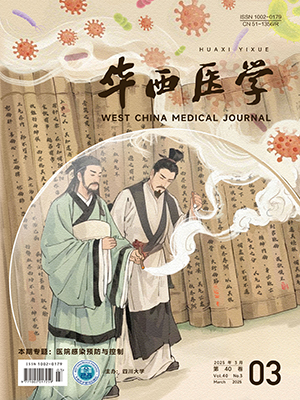| 1. |
马洪升. 日间医疗服务展望. 华西医学, 2016, 31(4): 601-602.
|
| 2. |
朱芳萍. 前馈控制在 ICU 导管安全护理管理中的实施. 中医药管理杂志, 2017, 25(2): 97-99.
|
| 3. |
郭芸. 护理安全管理的存在问题及对策探究. 中国农村卫生, 2016, 10(10): 57.
|
| 4. |
刘丽霞. 眼科护理中不安全因素分析与防范对策. 世界最新医学信息文摘, 2016, 16(58): 137-138.
|
| 5. |
俞德梁, 刘小南, 宁鹏涛, 等. 当前中国日间手术亟待解决之若干问题初探. 医学与哲学, 2015, 36(6): 1-3, 27.
|
| 6. |
冯青梅. 眼科高龄患者的护理安全管理效果. 中国社区医师, 2015, 31(35): 167, 169.
|
| 7. |
马张芳, 张宛侠. 眼科日间手术护理服务模式的实践和探讨. 华西医学, 2015, 30(5): 830-832.
|
| 8. |
骆洪梅, 黄晓芳, 任洁. 眼科日间手术指征扩展增加护理风险因素的分析和应对. 华西医学, 2015, 30(5): 811-813.
|
| 9. |
侯雨. 眼科住院患者护理安全管理防范对策. 世界最新医学信, 2016, 16(94): 336-337.
|
| 10. |
樊俭, 陆宏伟, 张大玲, 等. 眼科连台手术护理风险前馈控制. 护理学杂志, 2014, 29(16): 36-39.
|
| 11. |
刘萍. 眼科临床护理安全管理中的前馈控制. 环球中医药, 2015, 8(增刊 2): 147.
|
| 12. |
戴燕, 张雨晨, 马洪升, 等. 日间手术模式接受意愿及满意度调查分析. 华西医学, 2016, 31(4): 639-641.
|
| 13. |
闫沛, 王宇, 胡雪慧, 等. 日间手术患者护理管理模式应用效果分析. 护士进修杂志, 2016, 31(2): 130-133.
|
| 14. |
向艳丽. 护理风险管理在提高患者安全目标中的应用及效果分析. 中国卫生产业, 2016, 13(18): 153-156.
|
| 15. |
戴燕, 李继平, 刘素珍, 等. 华西医院日间手术服务模式的构建. 四川医学, 2013, 34(7): 1124-1126.
|




